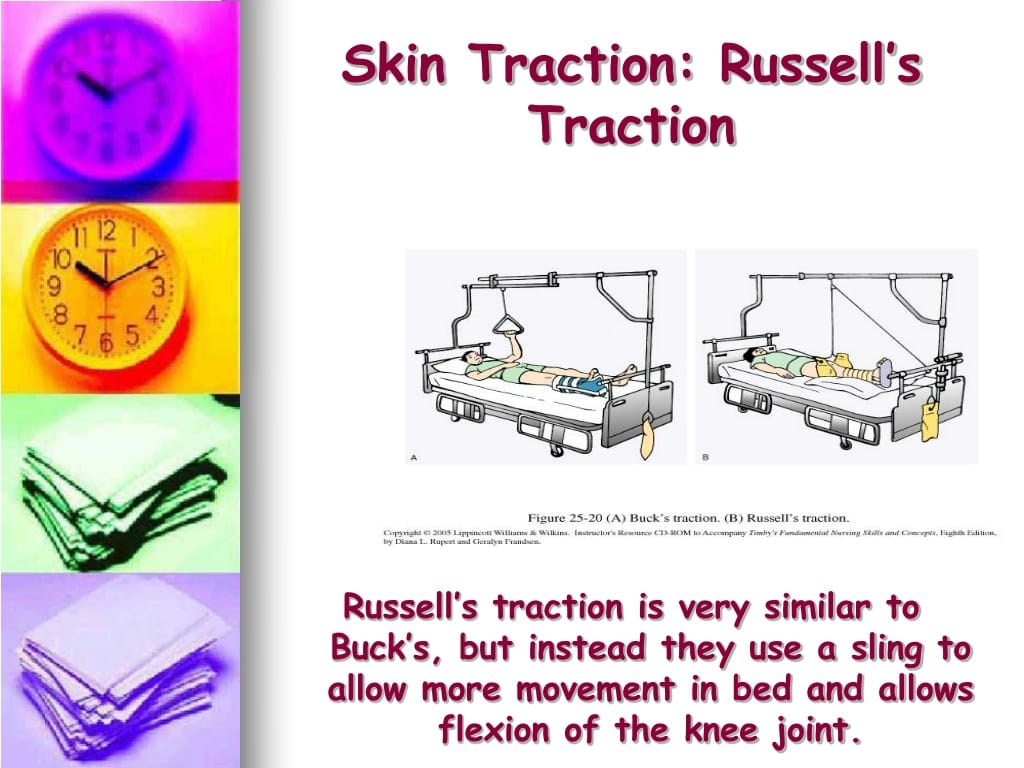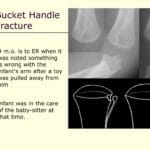Buck’s traction provides temporary pain relief and stabilization for fractures, dislocations, and contractures, primarily in the lower limbs, utilizing a skin-applied pulling force. This comprehensive guide explores its purpose, application, benefits, risks, and how it compares to other traction methods.
Understanding Buck’s Traction
Buck’s traction, also known as Buck’s extension, is a non-invasive form of skin traction used as a short-term treatment for certain orthopedic injuries. It involves applying a gentle, continuous pulling force to the affected limb using weights, ropes, and pulleys attached to a specialized boot or adhesive tape placed on the skin. It’s particularly helpful for fractures of the femur (thighbone), hip, and pelvis, as well as knee dislocations and contractures. This method serves as a valuable tool to manage pain, reduce muscle spasms, and maintain alignment before surgery or other definitive treatments.
How Buck’s Traction Works
The system’s weights create a continuous pulling force along the long axis of the limb, promoting stability and reducing muscle spasms that often exacerbate pain. The traction apparatus itself consists of:
- Weights: These provide the pulling force, calibrated based on the patient’s needs and the specific injury.
- Pulleys: These redirect the force from the weights to ensure proper alignment and direction of pull.
- Ropes or Cables: These securely connect the weights to the limb, transmitting the pulling force.
- Boot or Adhesive Tape: This anchors the leg to the system, ensuring even distribution of the pulling force.
Applying Buck’s Traction
The application of Buck’s traction is performed by a trained healthcare professional. It generally involves the following steps:
- Patient Positioning: The patient lies supine (flat on their back) with the injured leg slightly elevated.
- Securing the Limb: A specialized boot or adhesive tape is carefully applied to the affected limb, creating a secure anchor point.
- System Connection: Ropes or cables are attached to the boot or tape and then threaded through the pulleys to the weights.
- Weight Adjustment: The healthcare professional meticulously adjusts the weights to provide the optimal amount of pull, prioritizing patient comfort and proper bone alignment.
Benefits of Buck’s Traction
Buck’s traction offers several clinical advantages:
- Pain Reduction: By reducing muscle spasms and maintaining bone alignment, Buck’s traction can significantly alleviate pain.
- Muscle Relaxation: The consistent pull helps relax the muscles surrounding the fracture, minimizing painful spasms and promoting comfort.
- Fracture Stabilization: It maintains bone alignment, creating a more favorable environment for healing and reducing the risk of further injury.
- Delayed Surgery Support: It can be essential in stabilizing a fracture before surgery, particularly if there’s a delay due to other medical conditions or logistical reasons.
Potential Risks and Complications
While generally safe, Buck’s traction, like any medical procedure, carries potential risks:
- Skin Irritation: Prolonged contact with the boot or tape may lead to skin breakdown or pressure sores. Regular skin assessments and meticulous hygiene are essential.
- Nerve Damage: In rare instances, pressure on nerves can cause numbness, tingling, or weakness. Healthcare professionals carefully monitor for any signs of nerve compression.
- Compartment Syndrome: This rare but serious complication involves increased pressure within a muscle compartment, potentially disrupting blood flow and requiring immediate medical attention.
- Peroneal Nerve Palsy: This specific type of nerve damage can occur if the traction apparatus puts undue pressure on the peroneal nerve near the knee. It can lead to foot drop and difficulty lifting the foot. If you’ve experienced a fall and are experiencing pain in your wrist, you may have a bucket handle fracture.
Buck’s Traction vs. Other Traction Methods
Buck’s traction is often compared to other traction methods, namely skeletal traction and Russell’s traction:
| Feature | Buck’s Traction | Skeletal Traction | Russell’s Traction |
|---|---|---|---|
| Type | Skin traction | Bone traction | Modified skin traction |
| Application | Boot/tape on skin | Pins/wires into bone | Sling under the knee |
| Invasiveness | Non-invasive | Invasive (surgery required) | Non-invasive |
| Pull Strength | Limited | Strong | Moderate |
| Duration | Short-term | Long-term | Intermediate |
| Infection Risk | Lower | Higher | Lower |
| Ideal For | Pain relief, pre-surgery stabilization | Complex fractures, long-term immobilization | Hip and femur fractures |
Patient Care and Recovery
During Buck’s traction, active patient participation is crucial for successful recovery. Patients should:
- Communicate with Healthcare Providers: Report any changes in sensation, pain, or skin integrity.
- Maintain Proper Positioning: Avoid unnecessary movement or adjustments to the traction apparatus.
- Follow Medication Schedules: Adhere to prescribed pain medications and other medications as directed.
- Practice Deep Breathing Exercises: This helps prevent respiratory complications associated with immobility.
- Engage in Permitted Range-of-Motion Exercises: This can help maintain muscle strength and joint mobility in unaffected limbs.
Ongoing Research and Future Directions
While Buck’s traction remains a valuable tool, orthopedic research constantly explores new techniques and materials to improve fracture management. Ongoing studies may lead to advancements that further enhance patient comfort, reduce complications, and optimize healing outcomes.
Conclusion
Buck’s traction offers a simple, effective bridge between injury and definitive treatment. It’s essential to remember that this information is for general knowledge and doesn’t replace professional medical advice. Always consult a qualified healthcare professional for diagnosis and treatment recommendations. They can address your specific needs and provide the most up-to-date information regarding Buck’s traction and other treatment options.
- Unlock Elemental 2 Secrets: Actionable Insights Now - April 2, 2025
- Lot’s Wife’s Name: Unveiling the Mystery of Sodom’s Fall - April 2, 2025
- Photocell Sensors: A Complete Guide for Selection and Implementation - April 2, 2025















